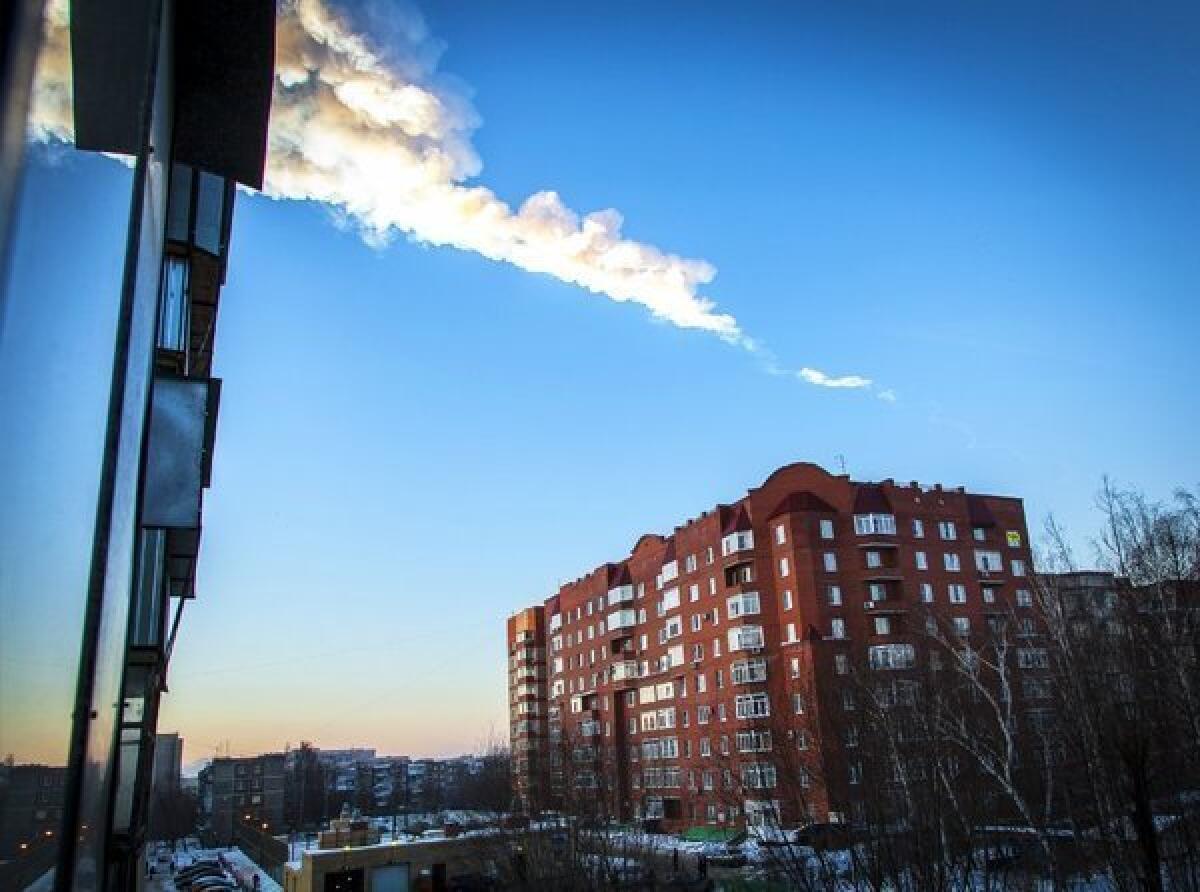Russian meteor, a ‘death rock from space,’ stars on ‘Nova’

- Share via
What will you be doing at 9 p.m. Wednesday night? If you were fascinated by the meteor that streaked across the Russian sky last month -- briefly outshining the sun -- then you should plan to watch “Nova” on PBS.
Wednesday’s episode of the excellent science documentary series is devoted to the bizarre case of what’s come to be known as the Chelyabinsk meteor (named for the Siberian city it passed over).
For those who need a brief refresher course, this huge space rock originated in the asteroid belt between Mars and Jupiter and somehow wound up orbiting the sun in a trajectory that put it on a collision course with Earth.
It entered the atmosphere without warning on the morning of Feb. 15 -- the same day that an asteroid dubbed DA14 had a much publicized near-miss with Earth, passing closer to the surface than communications satellites in geosynchronous orbit. (The two events were completely coincidental.)
The Chelyabinsk meteor was the biggest to fall to Earth since one flattened a huge swath of Tunguska, Siberia, in 1908.
“Meteor Strike” on “Nova” catches up with several scientists who began studying the meteor as soon as videos of the event began showing up on YouTube. The flight of the space rock was captured by dozens of car-mounted video cameras, making it the most well-documented meteor event in history. “It’s going to be a huge bounty to science,” one of the investigators said of the images.
One of the videos provided a clear line of the trajectory of the meteor, which fell at an angle of about 20 degrees. Combining that information with the 10 seconds it took for the object to streak across the sky allowed one of the experts to make a rough calculation that it was hurtling through the atmosphere at 40,000 mph and weighed more than 15 million pounds -- about as much as the Eiffel Tower.
“No one has ever before so precisely measured the speed, mass and explosive power of a large meteor,” the “Nova” narrator intones in a preview. It’s one of several unnecessary exaggerations -- the scientist who came up with the estimates describes them on camera as a “back of the envelope” calculation.
Earlier in the hour, the narrator puts the meteor in a category of “exploding death rocks from space,” even though the meteor caused a total of zero deaths (there were about 1,500 injuries, mostly the results of cuts from glass that broke due to the force of the shock wave).
Later, using data from a global network of 46 sensors designed to pick up signs of an illegal nuclear test, scientists calculated that the rock was about 65 feet across and weighed 10 tons. When it broke up in the atmosphere, the force of the explosion was 20 to 30 times greater than the atomic bomb dropped on Hiroshima during World War II. Sound waves from the explosion circled the Earth several times over the course of a day.
“Meteor Strike” follows one scientist from New Mexico who travels to Chelyabinsk to search for tiny fragments of the meteor that landed in the Siberian snow. (He and his Russian colleagues find many.)
He also stakes out a few positions where car-mounted cameras captured the meteor on video. His goal: To photograph the night sky from the same exact spot. That way, he can line up the video and the night photos and use the stars to figure out the meteor’s exact position in the sky.
For more information on the episode, including a 30-second preview, visit “Nova’s” website.
Return to the Science Now blog.
twitter.com/@LATkarenkaplan







